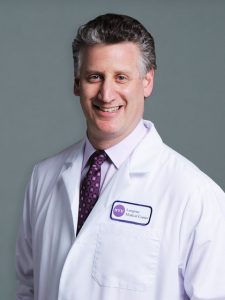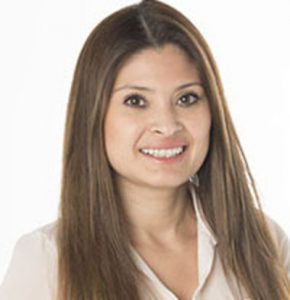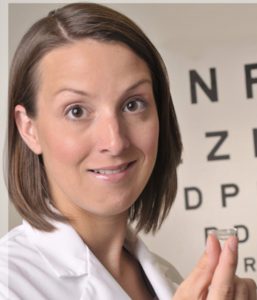February E-Update
March is National Eye Donor Month
Individuals with KC are among the best ambassadors to tell the story about the urgent need for donated corneas.
Blood type, age, eye color and quality of vision are not factors. This month is the perfect time to encourage your friends to register as donors. To read inspiring stories of people whose lives have been changed because someone chose to become an cornea donor, visit the Eye Bank Association of America’s website. To learn more about organ donation, or to register, visit Donate Life.

How many people have KC?
Today, most experts believe there is a higher number of individuals living with KC than we thought.
The NKCF website and our printed material have long stated that keratoconus occurs in one person in every 2,000. That number was derived from a voluntary patient registry that was initiated and maintained in part, by NKCF, from the 1930s to the early 1980s. Today, most experts believe that number seriously undestimates the number of individuals living with KC.
Read more here about a soon-to-be published article that calculates the number may be five to ten times higher than previously reported.

Managing Corneal Transplants
While much of the activity concerning treatment of keratoconus is crosslinking-related these days, corneal transplant remain an important fixture in the care of individuals with keratoconus.
About 20% of patients with KC – those with most advanced cases whose vision cannot be corrected by non-surgical means – are candidates for corneal tranplant surgery.
Dr. Laurence Sperber, MD, Director of the Cornea Service at New York City’s NYU Langone Medical Center reminds patients of the importance of working with your eye doctor before and AFTER your surgery. Read more here.

Crosslinking Roundtable
A dozen optometrists and ophthalmologists, representing three prominent professional organizations spent the day discussing crosslinking-related issues.
NKCF hosted a day long keratoconus roundtable in early February at University of California – Irvine. We hope to produce materials and information for the public based on the recommendations and observations of these experts. Special thanks to the individual participants: Dr. Michael Belin, MD of Tucson, AZ; Dr. Clark Chang, OD of Philadelphia, PA; Dr. Barry Eiden, OD of Chicago,IL; Dr. Marjan Farid, MD of Irvine, CA; Dr. Sam Garg, MD of Irvine, CA; Dr. David Geffen, OD of La Jolla, CA; Dr. Barry Lee, MD of Atlanta, GA; Dr. Marian Macsai, MD of Chicago, IL; Dr. Francis Mah, MD of La Jolla, CA; and Dr. Ryan McKinnis, OD of Cleveland, OH.
We are grateful to the Cornea Society, International Keratoconus Academy and the ASCRS (American Society for Cataract and Refractive Surgery) for their participation and support.



Pregnancy & Crosslinking
In an article published in the European journal, Acta Ophthalmogica, researchers observed that pregnancy can increase progression of keratoconus. They suggest that women with KC who have intentions of becoming pregnant, may consider corneal crosslinking treatment prior to pregnancy in an attempt to stop progression. Read more and some observations by Dr. Clark Chang, OD here.

Re-emergence of Keratoconus
Does a corneal transplant ‘cure’ the progression of keratoconus? No, not always.
In a very small percentage of cases, keratoconus may re-emerge years or even decades after surgery. Read more here.

. . . the keratoconus is a re-emergence. . . diseased cells remain at the outer edge of the cornea and, over time, migrate toward the graft and assimilate within the transplant tissue.”
– Rebekah Montes, OD, Houston, TX
KC Survey Results
Thank you the more than 400 individuals who participated in the Mayo Clinic survey.
The researchers are evaluating responses and will be publishing their data and sharing the results with NKCF. Survey director Dr. Ellen Shorter, OD, assistant professor of ophthalmology at the Illinois Eye & Ear Infirmary in Chicago noted that successful management of keratoconus is a team effort. A slight majority of patients get their eye care from an ophthalmologist (an MD or medical doctor) (51%), followed by an optometrist (an eye doctor or OD) (41%). For some patients, their contact lens fitter or technician is the professional who provides the majority of their eye care (7%). Our recommendation is that you assemble a team that includes all three professions working together so that you will have the most options for your treatment!

The average age at diagnosis of those who responded to the 2017 Keratoconus Patient Survey was 25.9 years old.”
– Ellen Shorter, OD, Illinois Eye & Ear Infirmary
Caption Contest Winners

Congratulations to our caption contest winner, Darbi Pacifico of Pittsburgh.
If you prefer to send a check, payable to UCI Foundation
to support NKCF, please mail it to:
NKCF – GHEI
850 Health Sciences Rd, 3rd Floor
Irvine, CA 92697
From The Director
This month, we invited some of the leaders in corneal cross-linking to a day-long meeting hosted by NKCF. We want to develop the best responses to the questions you ask. We agreed there is still much to learn about CXL. Rest assured that your eyecare professionals are as anxious as you to best apply this technology. They are actively investigating ways to improve treatments and outcomes.
On a related note, the company responsible for the FDA-approved cross-linking devices, Avedro, is conducting a customer survey for ophthalmologists who are using their crosslinking equipment. The company will be making a $25 contribution to NKCF for each completed survey. We are grateful to Avedro for this creative way to show support for NKCF, and to the doctors who participated.


